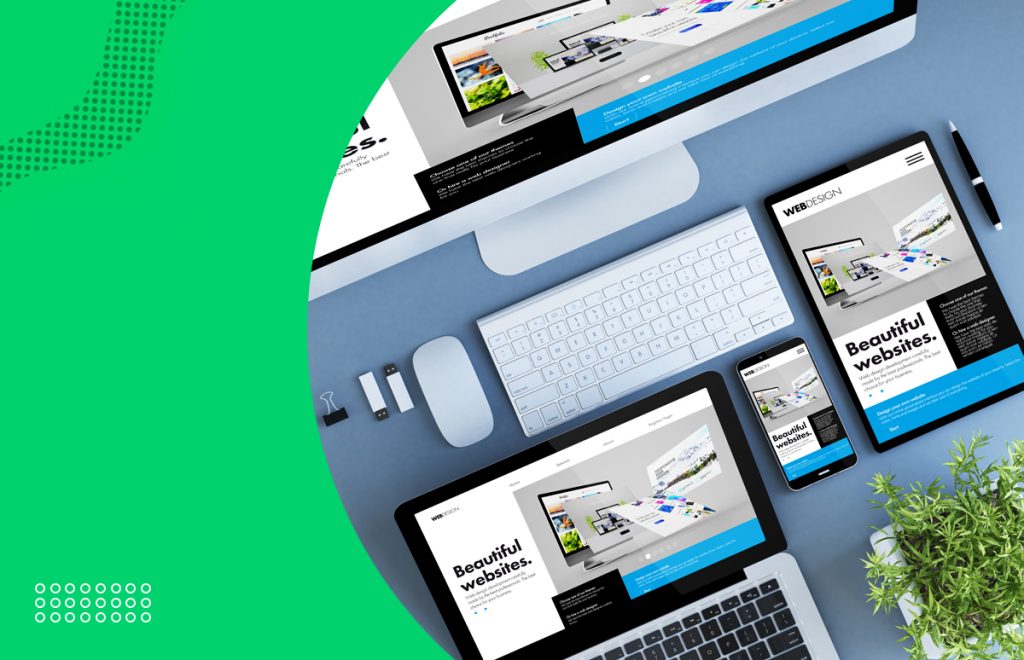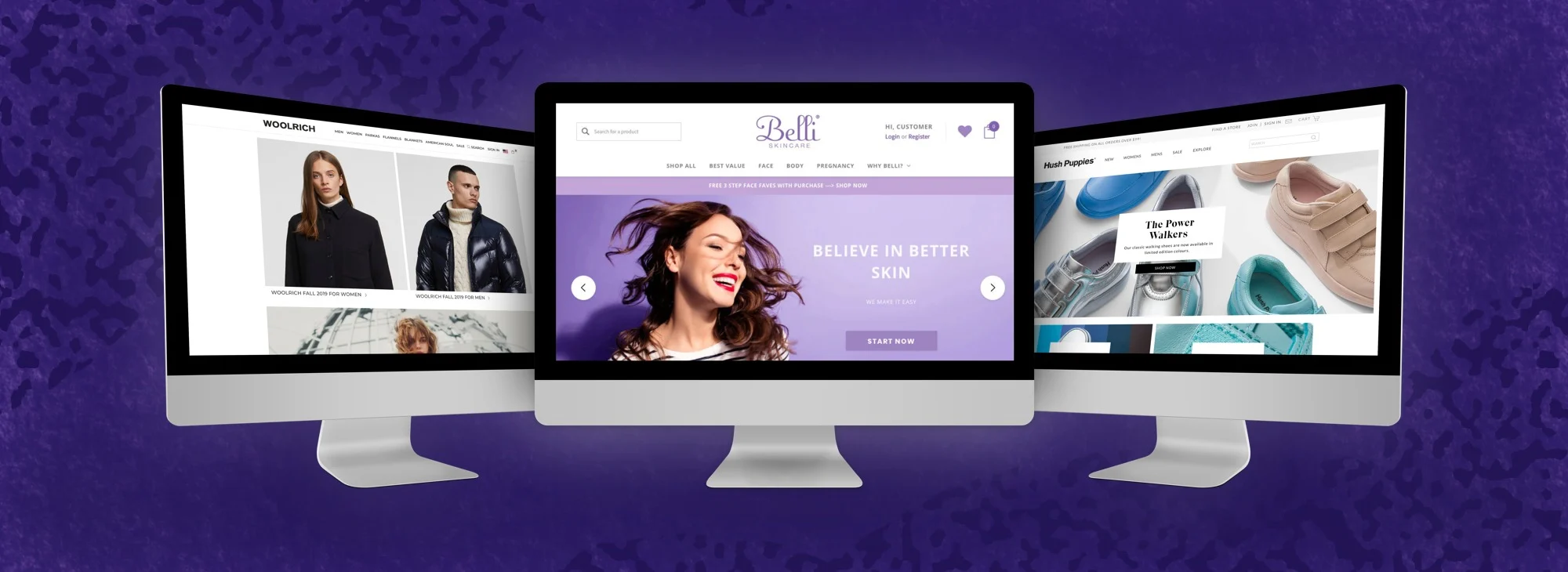How Website Design Can Impact Your Business Success and Online Presence
How Website Design Can Impact Your Business Success and Online Presence
Blog Article
Modern Site Design That Captures Focus and Converts
In an increasingly digital landscape, modern-day web site design has arised as a pivotal element in catching user focus and driving conversions. By strategically utilizing aesthetic power structure, responsive designs, and involving interactive elements, developers can create experiences that not only attract site visitors yet also help with significant interactions. Furthermore, reliable call-to-action methods play a vital role in guiding individuals toward wanted end results. As we explore these necessary components, it becomes clear that recognizing their interaction can substantially impact an internet site's performance and individual complete satisfaction. What are the crucial elements that really make a difference?
Significance of Visual Power Structure
Aesthetic power structure is an essential aspect in web site layout, as it overviews individuals' interest and enhances their overall experience. By tactically arranging content, developers can route customers to the most vital information first, thus enhancing engagement and boosting functionality. Efficient aesthetic pecking order uses different techniques, consisting of dimension, shade, spacing, and contrast. Larger aspects naturally draw the eye, while contrasting colors can highlight key messages, making them stick out among more subdued components.
Incorporating a rational flow in material plan is important; for example, putting one of the most essential details on top of a web page cultivates immediate acknowledgment. In addition, regular usage of typography, such as differing font dimensions and styles, assists establish a clear content structure. This organization not only help in navigation but also builds count on, as individuals feel extra comfy when they can conveniently discover what they are looking for.
Inevitably, a well-executed aesthetic power structure not only improves aesthetic charm yet also dramatically impacts customer actions. By focusing on vital aspects and making certain a smooth experience, developers can effectively transform visitors right into consumers, reinforcing the importance of this fundamental design principle in contemporary website advancement.
Responsive Design for All Devices
Developing a seamless experience throughout different tools is crucial in today's digital landscape, where individuals accessibility websites from desktop computers, mobile phones, and tablets alike. Responsive layout is a critical technique that ensures sites adapt fluidly to different screen alignments, sizes, and resolutions. By employing adaptable grids, images, and CSS media inquiries, developers can create layouts that maintain visual stability and capability, despite the tool being used.
The relevance of receptive design prolongs beyond appearances; it directly affects customer involvement and conversion rates. An internet site that works well on all gadgets encourages longer visits and decreases bounce prices, as users are more probable to engage with content that is very easy to browse. Search engines, particularly Google, focus on mobile-friendly sites in their rankings, making responsive style a vital part of search engine optimization (SEARCH ENGINE OPTIMIZATION)
Integrating responsive layout not just boosts user experience but additionally enhances the growth process. By developing a solitary website that works throughout gadgets, services can save time and resources compared to creating separate mobile and desktop computer versions. Eventually, receptive style is a fundamental strategy for modern web site style, ensuring availability and complete satisfaction for all individuals, no matter their tool.
Involving Interactive Components
While a receptive layout prepares for a useful internet site, integrating interesting interactive aspects is critical for catching user attention and fostering deeper links. Website Design. Interactive elements, such as animations, tests, and clickable infographics, produce a more find dynamic customer experience, urging site visitors to invest more time on the website
Integrating interactive features can likewise lead users via facility info, making it simpler to digest content. For example, interactive sliders can show product variations, while ingrained video clips can provide presentations or reviews that resonate even more than static images or message. Gamification methods, like benefits for involving or completing jobs with material, can enhance user motivation and retention.
Reliable use of interactive elements not only enriches the customer experience yet can additionally lead to higher conversion rates. It is vital to balance interactivity with efficiency; extremely complex features may impede website rate, adversely impacting user complete satisfaction.
Structured Navigating Practices
Efficient navigation is a foundation of any effective web site, as it straight affects user experience and web content access. Streamlined navigation practices ensure that customers can quickly situate information, improving their interaction with the website. A well-structured navigation food selection must be intuitive and basic, usually featuring a restricted number of primary groups to stay clear of overwhelming site visitors.
To accomplish structured navigating, Source designers must prioritize an ordered structure that logically organizes content. Carrying out breadcrumb tracks can provide customers with context about their existing location within the site, enabling for seamless backtracking. In addition, making use of drop-down food selections can properly conserve space while still giving access to subcategories.
Receptive layout is critical, as navigation needs to be practical throughout all tools (Website Design). Mobile customers, in particular, benefit from touch-friendly menus and retractable areas that maintain functionality without jeopardizing appearances

Efficient Call-to-Action Techniques
A well-crafted call-to-action (CTA) is crucial for directing users towards desired outcomes on a web site, as it urges them to engage with material or buy. To optimize their efficiency, CTAs must be clear, engaging, and strategically placed throughout the website.
First, utilize action-oriented language that communicates seriousness or value, such as "Start," "Join Now," or "Insurance claim Your Discount." This language not only inspires users but also sets clear assumptions about the following steps.
Second, think about style components; CTAs should stand out aesthetically with contrasting shades, ample whitespace, and prominent positioning. A switch that is easy to see and click boosts the probability of individual interaction.
Additionally, customizing CTAs based upon individual habits or demographics can dramatically enhance involvement. Tailored messages reverberate extra with customers, driving greater conversion prices.

Conclusion
To conclude, modern site layout emphasizes the integration of visual pecking order, receptive layouts, engaging interactive aspects, structured navigating, and reliable call-to-action strategies. These elements jointly improve user experience, making certain that visitors remain engaged and inspired to check out web content additionally. By prioritizing these style concepts, businesses can considerably enhance individual retention and conversion prices, eventually bring about better success in the digital landscape. The continuous evolution of web style emphasizes its important duty in reliable on-line interaction and advertising.
In a significantly electronic landscape, modern website design has actually emerged as a pivotal aspect in recording individual attention and driving conversions.Aesthetic power structure is a crucial aspect in website design, as it overviews customers' interest and enhances their overall experience.The significance of receptive design expands past looks; it directly impacts customer involvement and conversion rates.Incorporating responsive style not only improves user experience but additionally enhances the advancement procedure. Eventually, responsive layout is a basic strategy for modern-day site design, making certain availability and complete satisfaction for all customers, regardless of their gadget.
Report this page